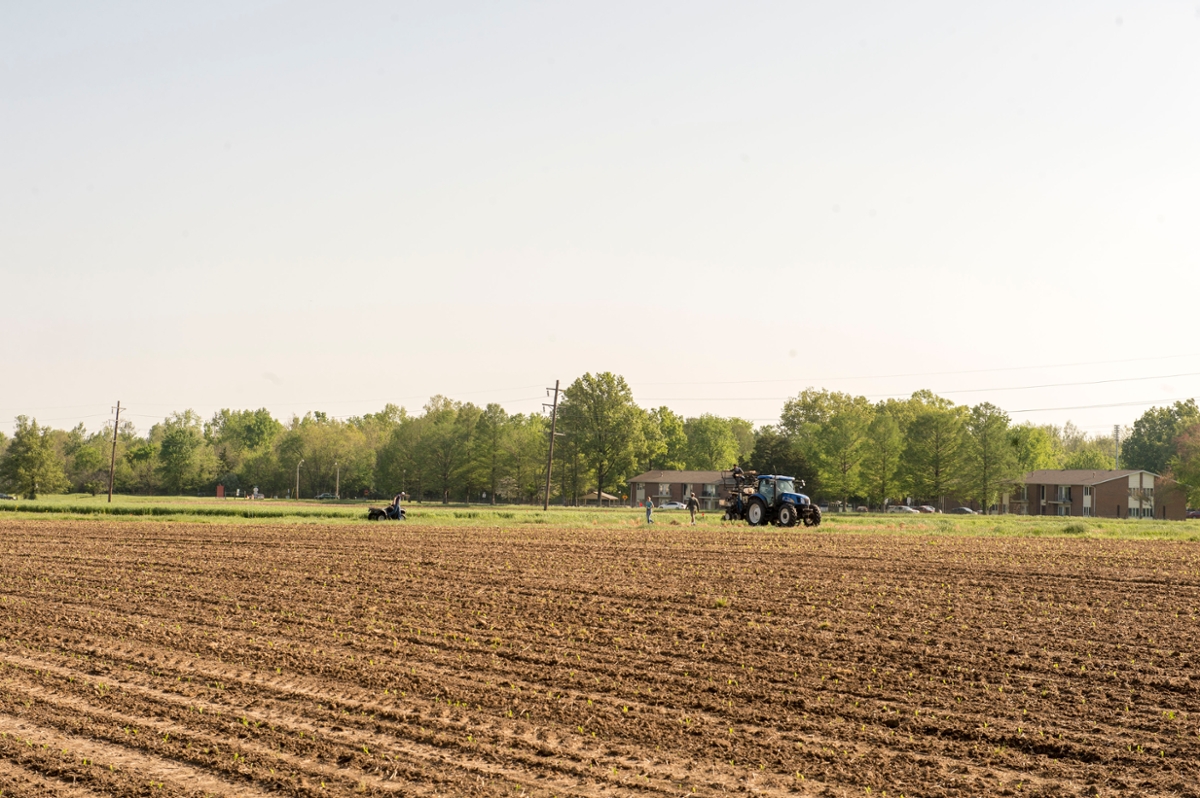
July 31, 2018
Managing water and protecting the environment: Professor provides local farmers with another tool to assist in water quality
CARBONDALE, Ill. — By 2050, an estimated 9 billion people will be dependent on the earth’s farms to feed them. But as the need increases, so do environmental challenges. That’s why researcher and professor, Jon Schoonover, is diligently working to provide local farmers with sustainable water quality practices.
Drainage from farms leach nutrients and pollute the environment
Nutrient and water quality management can be tricky for local farmers to navigate. Many agriculture fields in the Midwest sit adjacent to some form of ditch, stream, river or lake.
When the water level on the field rises and then flows off, many of the necessary nutrients are lost from the soil; and exported to waterways. Not only does this leach important nutrients from the soil, but it can also prove harmful for the environment.
In an effort to help with both problems, Schoonover, a professor in forestry at Southern Illinois University Carbondale, has spent several years testing the usefulness of saturated buffers. A buffer is an area of land covered in grass, trees, shrubs or other vegetation to slow and filter runoff from fields.
Saturated buffers help filter runoff, preserving nutrients
Many farms implement some form of tile drainage system. This management method reduces flooding and saturation on the fields by removing excess water from the soil. Tile drainage allows farmers to access their fields earlier in the spring and promotes more uniform crop germination and better growing conditions.
Schoonover’s research has focused on fields that are already drained by subsurface tiles.
“A normal tile drainage system has a main line that allows water to empty into a nearby ditch or stream,” Schoonover said. “A saturated buffer consists of a three-chambered control structure situated about 50-100 feet off of the stream edge that diverts the tile water to run parallel to the stream.”
The water then runs 500 feet in both directions through the line, Schoonover explained. Being pushed out, the water soaks the adjacent buffer zone.
The goal of this system is to link a drainage outlet with a nearby buffer. The vegetated buffer naturally removes the nutrients from the water through plant uptake and/or denitrification and ultimately reduces the amount of nitrogen entering the waterways.
While this process has been tested in certain locations, Schoonover and his team are taking saturated buffers to the next level by examining how this system might work in a two-stage system.
By combining this technique with the common use of cover crops; the amount of nutriments entering nearby streams can be greatly decreased.
Helps farmers meet water quality standards
Schoonover’s system is built to provide local farmers with yet another method to add to their set of watershed management techniques.
“Our main goal with this research is to develop tools that farmers can use to address water quality on their farms,” Schoonover said.
Many Illinois farmers have become concerned about increased regulations regarding water quality standards. Schoonover believes the saturated buffer system could be an effective best management practice to reduce nutrient and sediment loss into waterways and show regulators that farmers are taking a proactive approach to limit nutrient loss.
Few other projects like this are currently in use on agricultural fields and Schoonover, and the forestry team at Southern Illinois University, are hoping their research helps to propel saturated buffers into different regions and provide local farmers with a management practice perfect for their unique situation.
